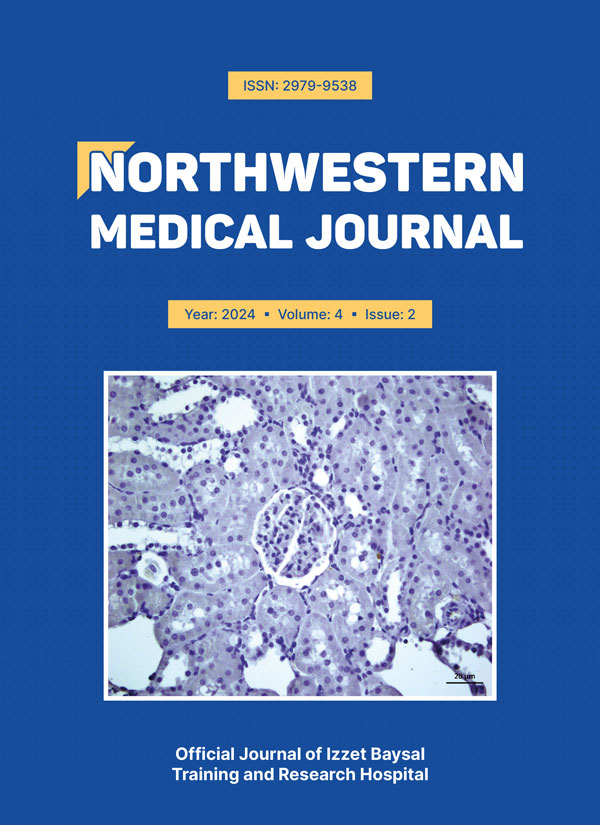Abstract
Aim: Diabetes mellitus (DM) is a common metabolic disease. Early diagnosis of diabetes prevents the increase in mortality and morbidity due to complications. The oral glucose tolerance test (OGTT) is a test used in the diagnosis of DM and in the determination of impaired glucose tolerance (IGT). In our study, it was aimed to evaluate the satisfaction of patients who underwent OGTT.
Methods: A 25-question questionnaire was applied to 300 patients who underwent OGTT, aiming to evaluate their satisfaction. The physical and psychological status of the patients was examined before, during, and after the test.
Results: Patients who were informed about the test before the test experienced less nausea during fluid intake (p=0.005). Approximately 58.7% of the participants agreed to repeat the test. Those who felt nauseous or hungry during the test were statistically less likely to accept retesting. The retest acceptance rates were statistically higher (p<0.05) among individuals who did not feel uncomfortable with the blood draw and inactivity and who did not vomit or feel uneasy during the test. 70% of the participants answered 'yes' to the suggestion of using an alternative diagnostic method.
Conclusion: OGTT is the gold standard for the diagnosis of IGT and DM, despite tests such as HbA1c and fasting plasma glucose, which are more easily performed and practical. It would be beneficial to develop another method that is easy to apply, better tolerated by patients, easy to repeat, and can be standardized instead of OGTT.
Keywords: diabetes mellitus, oral glucose tolerance test, satisfaction
Copyright and license
Copyright © 2024 The Author(s). This is an open-access article published by Bolu İzzet Baysal Training and Research Hospital under the terms of the Creative Commons Attribution License (CC BY) which permits unrestricted use, distribution, and reproduction in any medium or format, provided the original work is properly cited.
How to cite
References
- Türkseven B, ERBAŞ G. Okul tuvaletlerindeki enterik bakteriyel kontaminasyonun araştırılması. Mersin Üniversitesi Sağlık Bilimleri Dergisi. 2018; 12: 32-40. https://doi.org/10.26559/mersinsbd.437562
- World Health Organization (WHO). WHO Information Series on School Health, Document 10: Creating an Environment for Emotional and Social Well-Being: An Important Responsibility of a Health-Promoting and Child Friendly School. Geneva: WHO; 2003.
- Başustaoğlu AC, Güney M. Klinik Mikrobiyoloji Laboratuvarlarında Biyogüvenlik. Klimud Yayınları. 2012; 2.
- Gümüş HÖ, Etöz OA, Yücesoy T, Kılıç E, Er Ö, Alkan A. Diş hekimliği fakültelerinde kullanılan farklı diş ünitlerinin su ünitlerinin su sistemlerinin geri akım kontaminasyonu açısından değerlendirilmesi. Selcuk Dental Journal. 2014; 1: 55-8. https://doi.org/10.15311/1441.272634
- Alaçam A, Polat S, Özbucak E, Atabek D, Sipahi AB. Diş hekimliğinde öğrenci kliniğinde tedavi öncesi, sırası ve sonrasındaki çevresel kontaminasyon. Gazi Üniversitesi Diş Hekimliği Fakültesi Dergisi. 2008; 25: 1-5.
- Yusuf G, Mustafa İ, Baykalır BG. Araştırma Laboratuvarlarında Biyogüvenlik, Zoonotik Hastalıklar ve Tıbbi Atıkların Bertarafı. Atatürk Üniversitesi Veteriner Bilimleri Dergisi. 2013; 8: 81-96.
- Şeker H, Yardımcı H. Mikrobiyoloji laboratuvarlarında biyogüvenlik. Orlab On-Line Mikrobiyoloji Dergisi. 2003; 1: 3-32.
- Solmaz M, Solmaz T. Tıbbi Laboratuvarlarda Biyogüvenlik. 3rd International Academic Research Congress (ICAR); 2020.
- Kılıç İ, Doğan İ. Veteriner Fakültesi Laboratuvarlarındaki Biyogüvenlik Durumuna Yönelik Akademisyen Görüşleri: Afyon Kocatepe Üniversitesi'nde Bir Uygulama. Kocatepe Veterinary Journal. 2011; 4: 17-23.
- Owolabi JO, Tijani AA, Ihunwo AO. A Need to Protect the Health and Rights of Anatomists Working in Dissection Laboratories. Risk Manag Healthc Policy. 2022; 15: 889-93. https://doi.org/10.2147/RMHP.S362305
- Shoja MM, Benninger B, Agutter P, Loukas M, Tubbs RS. A historical perspective: infection from cadaveric dissection from the 18th to 20th centuries. Clin Anat. 2013; 26(2): 154-60. https://doi.org/10.1002/ca.22169
- Tabaac B, Goldberg G, Alvarez L, Amin M, Shupe-Ricksecker K, Gomez F. Bacteria detected on surfaces of formalin fixed anatomy cadavers. Ital J Anat Embryol. 2013; 118(1): 1-5.
- Koç A, Çetin S, Şener F, Kaçmaz B. Kırıkkale Üniversitesi Tıp Fakültesi'nde sağlık çalışanlarının önlüklerindeki bakteriyolojik kontaminasyonların incelenmesi. Anadolu Güncel Tıp Dergisi. 2020; 2: 1-5. https://doi.org/10.38053/agtd.576836
- Özkeser O. Araştırma ve öğrenci laboratuvarlarında fungal ve bakteriyel mikroorganizmalarının yükünün belirlenmesi [Master’s thesis]. Adana: Çukurova Üniversitesi, Fen Bilimleri Enstitüsü, İş Sağlığı ve Güvenliği Anabilim Dalı; 2019.
- Güldaş N, Alp-Çavuş S, Gülay Z. Yoğun bakım üniteleri ve ameliyathane çalışanlarının cep telefonlarının mikrobiyal kontaminasyonunun araştırılması. Klimik Dergisi. 2018; 31: 227-31. https://doi.org/10.5152/kd.2018.61
- Alpay Y, İrvem A, Yücel M, Yavuz T. Sağlık Çalışanlarının Cep Telefonlarinda Mikroorganizma Kolonizasyonunun Değerlendirilmesi. Balıkesir Sağlık Bilimleri Dergisi. 2015; 4: 148-51.
- Farnsworth CW, Wallace MA, Liu A, Gronowski AM, Burnham CAD, Yarbrough ML. Evaluation of the Risk of Laboratory Microbial Contamination during Routine Testing in Automated Clinical Chemistry and Microbiology Laboratories. Clin Chem. 2020; 66(9): 1190-9. https://doi.org/10.1093/clinchem/hvaa128
- Wang XL, Juan S, Song QQ, et al. Viral contamination source in clinical microbiology laboratory. Biomedical and Environmental Sciences. 2016; 29: 609-11.
- Wurtz N, Papa A, Hukic M, et al. Survey of laboratory-acquired infections around the world in biosafety level 3 and 4 laboratories. Eur J Clin Microbiol Infect Dis. 2016; 35(8): 1247-58. https://doi.org/10.1007/s10096-016-2657-1
- Demiryürek D, Bayramoğlu A, Ustaçelebi S. Infective agents in fixed human cadavers: a brief review and suggested guidelines. Anat Rec. 2002; 269(4): 194-7. https://doi.org/10.1002/ar.10143
- Kaufman MH. Dangerous dissections: the hazard from bodies supplied to Edinburgh anatomists, winter session, 1848-9. J R Coll Physicians Edinb. 2005; 35: 268-74.
- Billette de Villemeur T, Gelot A, Deslys JP, et al. Iatrogenic Creutzfeldt-Jakob disease in three growth hormone recipients: a neuropathological study. Neuropathol Appl Neurobiol. 1994; 20(2): 111-7. https://doi.org/10.1111/j.1365-2990.1994.tb01169.x











